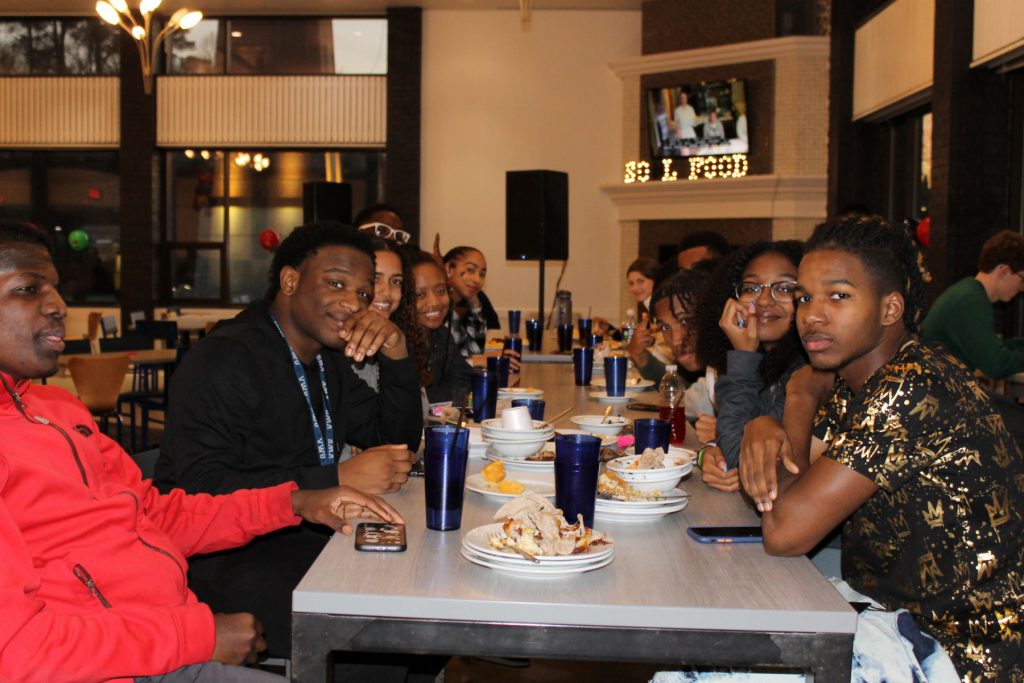A series of perspectives on gun control in the academic world
In the aftermath of recent gun-related violence at schools, other educational institutions are taking steps to help combat potential gun violence. Bulletproof backpacks in particular have become more popular, and one company reported a 30 percent rise in sales just days after the Parkland shooting. Similar sale rises in blast-resistant doors and locks, reinforced glass and even “wall armor” have also been reported.
Vice President for Student Affairs Keith Moore discussed what measures Virginia Wesleyan is taking to ensure student safety amidst the rising controversy. The most recent measures include the new fence surrounding the campus, better lighting and additional strategically-placed security cameras.
“It’s genuinely something we think about every single minute of every single day,” Moore said. He emphasized Wesleyan’s commitment to public safety and dedicating to “[putting] people’s minds at ease.”
Though he insisted Wesleyan would maintain its strict no weapons policy, specifically with regard to students, he encouraged people to “understand their own role in their safety” and educate themselves on what protective measures are allowed on campus.
“I think that it would be good,” he said. “Certainly, to have pepper spray and other non-lethal, legal means of protecting yourself are welcome.” He called attention to pepper spray and the kubaton as two examples of permitted self-defense items.
Current security measures are briefly outlined in an informational sheet entitled “Keeping Virginia Wesleyan University Safe and Secure,” available to students and faculty. The sheets states that “the safety and wellbeing of our community members is paramount at Virginia Wesleyan. The University maintains procedures and protocols designed to minimize opportunities for threats and to communicate with faculty, staff, and students in the event of an emergency.”
Measures include but are not limited to: access to external authorities such as the Virginia Beach Police Department and Davis Corner Fire Station, on-campus uniformed officers, a two-way radio with direct access to the Third Precinct of the aforementioned police department, protective fencing, security cameras, a singular and guarded campus entrance, emergency sirens and the LiveSafe mobile app. These measures “are continually evaluated and updated as needed” as part of regular campus safety reports that the school requests. Wesleyan has also hosted Rape Aggression Defense (RAD) programs in the past, along with other seminars that focus on basic self-defense methods.
The sheet also reminds community members about the “best practices” for day-to-day and emergency situations, including reporting all suspicious activity, remaining wary of strangers, especially those attempting to follow you into locked facilities, familiarizing yourself with the “Run, Hide, Fight” tactics from the Department of Homeland Security and using common sense.
Moore specifically stressed how important reports were to keeping campus safe and encouraged students to report suspicious activity on LiveSafe or to security. “See something, hear something, say something,” Moore said. “We’re only as good as the information we have.”
While some have called for more direct action, Moore discounted the possibility of hiring armed guards to patrol campus. “We’ve looked at it in earnest three times, and based on our campus size, proximity to police and relationship with them, we decided to maintain the ‘status quo,’” he said. Moore clarified that concerns about rising tuition were not a driving force behind the decision.
The possibility of providing staff and faculty with firearms, specifically professors, was also rejected. He stated that arming personnel would involve deputizing those persons, which would in turn require “a different level of ability.”
Students or faculty looking to arm themselves in “non-lethal, legal” ways may have some trouble, however, as Wesleyan’s definition of a “weapon” is somewhat vague. Wesleyan’s “Policy for the Prevention of Violence in the Workplace” defines weapons as including “guns, knives, explosives, and other items that have the potential to inflict harm.” The student handbook mentions weapons in its “prohibited items” section, but also notes that the list is not all-inclusive. It states that “weapons capable of inflicting injury or damage are not permitted in the halls. This includes, but is not limited to, firearms, airsoft pellet guns, and stun guns.” Neither “weapon” nor “violence” is defined in the “common university terms” section.
Stun guns, Tasers, baseball bats, batons, tactical pens and flashlights, personal alarms and bean bag guns are the most common non-lethal weapons for self-defense commercially offered. Less traditional items include potato guns, bricks and any sharp or heavy objects.
Before bringing any self-defense item on campus, check with security or administration to make sure the item does not violate any policies.
The next issue will feature student views on the controversy.
Mickella Rast
mjrast@vwu.edu

